Seoul's Royal & Cultural Odyssey
Embark on a captivating exploration of Seoul's heritage in this free walking tour, where history and culture come alive at every turn.
Time
3 Hours
Stops
9 Places
Distance
?
Gyeongbokgung Palace
Begin your journey at Gyeongbokgung Palace, the largest of the Five Grand Palaces built during the Joseon Dynasty, offering a glimpse into Korea's royal history.

Gyeongbokgung Palace (Source: Google Maps)
Gyeongbokgung Palace, constructed in 1395, is the largest of the Five Grand Palaces built during the Joseon Dynasty. It served as the main royal palace and is a testament to the architectural grandeur of the era. The palace features a beautiful combination of traditional Korean architecture and stunning gardens, highlighting the harmonious relationship between nature and royal life. The iconic Gwanghwamun Gate, with its majestic structure, serves as the main entrance and is an essential symbol of Korea's history. Visitors can witness the changing of the guard ceremony, which adds to the cultural experience. Gyeongbokgung has undergone extensive restoration efforts to preserve its historical significance and beauty, making it a must-visit landmark for anyone interested in Korea's royal history.
National Folk Museum of Korea
Located within the grounds of Gyeongbokgung, this museum provides insights into the daily lives and traditions of Korean people through its extensive collection of artifacts.

National Folk Museum of Korea (Source: Google Maps)
The National Folk Museum of Korea, located within the grounds of Gyeongbokgung Palace, is dedicated to preserving and showcasing the daily lives and traditions of the Korean people. Established in 1945, the museum features a vast collection of artifacts, including traditional clothing, tools, and household items that reflect the cultural heritage of Korea. The museum's exhibitions are thoughtfully arranged to provide insights into the historical context of each item, allowing visitors to appreciate the evolution of Korean life through the ages. The museum also hosts various educational programs and cultural events, making it a vibrant hub for learning about Korea's rich traditions. Its beautiful architecture, blending seamlessly with the surroundings of Gyeongbokgung, enhances the overall experience of exploring Korea's past.
Bukchon Hanok Village
A short walk from the palace, Bukchon Hanok Village presents a beautifully preserved area of traditional Korean homes, known as 'hanok,' set against a backdrop of the modern city.

Bukchon Hanok Village (Source: Google Maps)
Bukchon Hanok Village is a beautifully preserved area that showcases traditional Korean architecture, specifically the 'hanok' style, characterized by wooden structures, tiled roofs, and an emphasis on harmony with nature. Nestled between Gyeongbokgung Palace and Changdeokgung Palace, this village offers a glimpse into Korea's past, with hundreds of hanoks dating back to the Joseon Dynasty. Visitors can stroll through narrow alleyways, experiencing the unique charm of the village while enjoying the striking contrast of modern Seoul's skyline in the background. Many of the hanoks serve as cultural centers, teahouses, and guesthouses, allowing tourists to immerse themselves in traditional Korean culture. Bukchon is not only a historical site but also a living community, where residents maintain their heritage while engaging with visitors.
Jogyesa Temple
Head to Jogyesa Temple, the chief temple of the Jogye Order of Korean Buddhism, known for its stunning architecture and serene atmosphere.
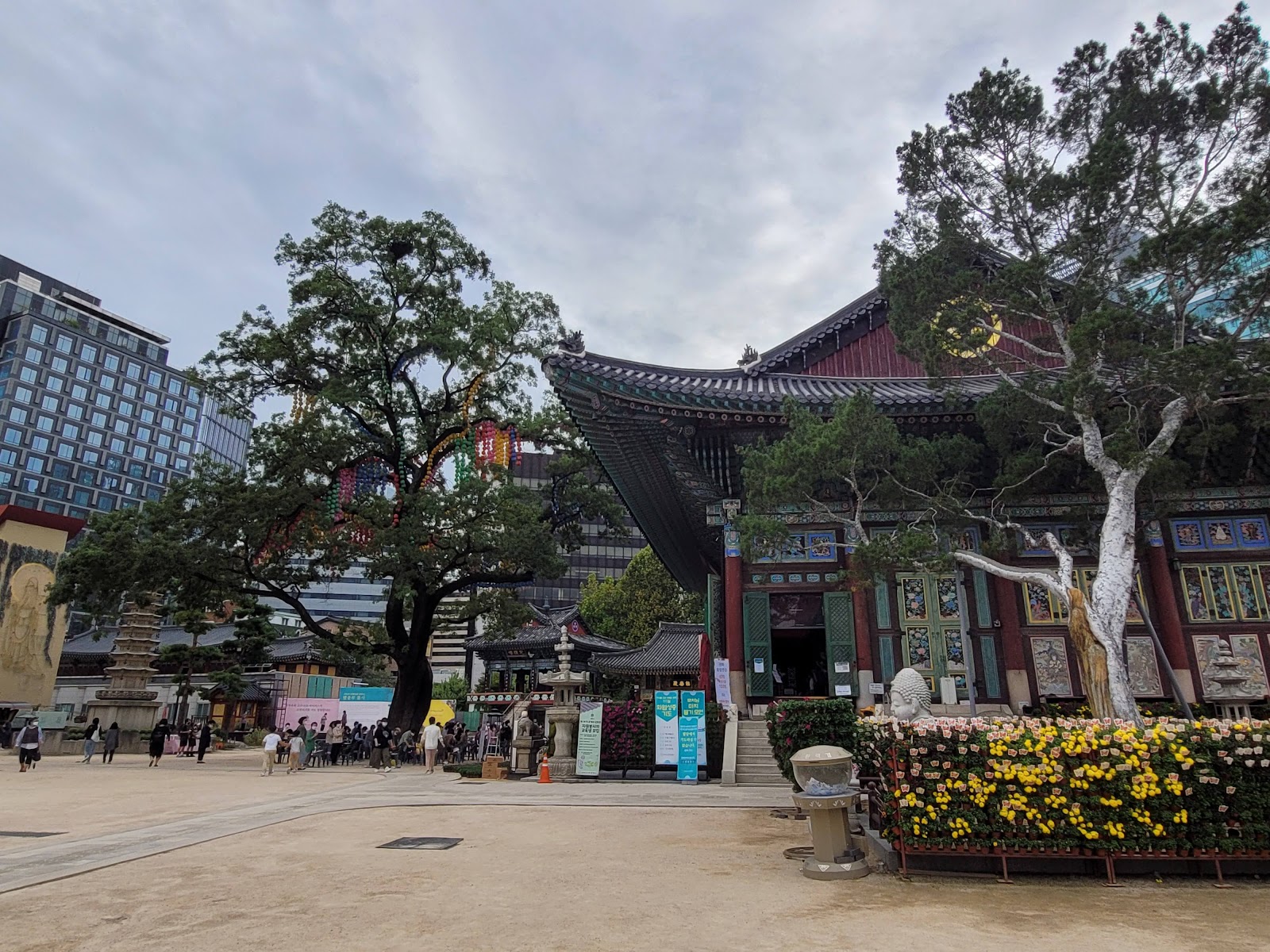
Jogyesa Temple (Source: Google Maps)
Jogyesa Temple is the chief temple of the Jogye Order of Korean Buddhism and serves as a spiritual center for practitioners and visitors alike. Established in the late 14th century, it has undergone several renovations, with the current structures reflecting a blend of traditional and modern architectural styles. The temple is renowned for its stunning lantern displays, especially during the Lotus Lantern Festival, which celebrates Buddha's birthday. Inside, visitors can admire the beautiful altar adorned with intricate carvings and colorful decorations. The serene atmosphere of Jogyesa Temple provides a peaceful retreat from the bustling city, inviting reflection and meditation. The temple grounds are also home to ancient trees, symbolizing wisdom and longevity, making it a significant cultural and spiritual landmark in Seoul.
Insadong Street
Continue to Insadong, a cultural hub filled with art galleries, antique shops, and traditional tea houses, perfect for immersing yourself in Korean culture.
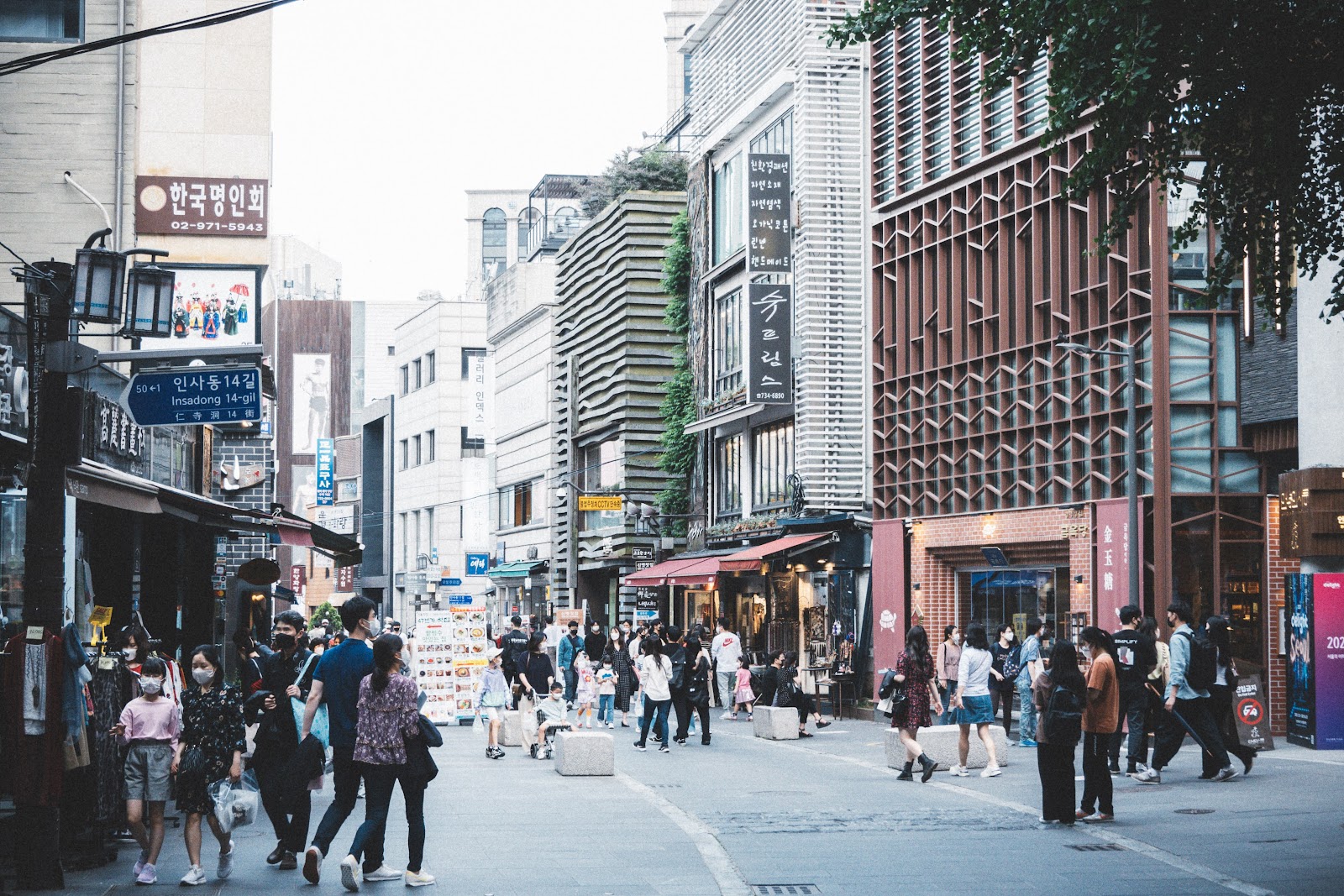
Insadong Street (Source: Google Maps)
Insadong Street is a vibrant cultural hub that embodies the essence of traditional Korean arts and crafts. Known for its antique shops, art galleries, and traditional tea houses, Insadong attracts both locals and tourists seeking to experience Korea's rich heritage. The street's atmosphere is steeped in history, with many shops offering handmade crafts, calligraphy, and pottery, showcasing the skills of Korean artisans. Visitors can enjoy a leisurely stroll while sampling traditional snacks and teas, immersing themselves in the local culture. Insadong also hosts various cultural events and performances throughout the year, making it a lively destination for those interested in art and history. The blend of modern and traditional elements creates a unique charm that captures the heart of Seoul.
Tapgol Park
Just a short walk away, Tapgol Park is a historic site that played a significant role in the March 1st Movement for Korean independence, featuring the striking Wongaksa Pagoda.
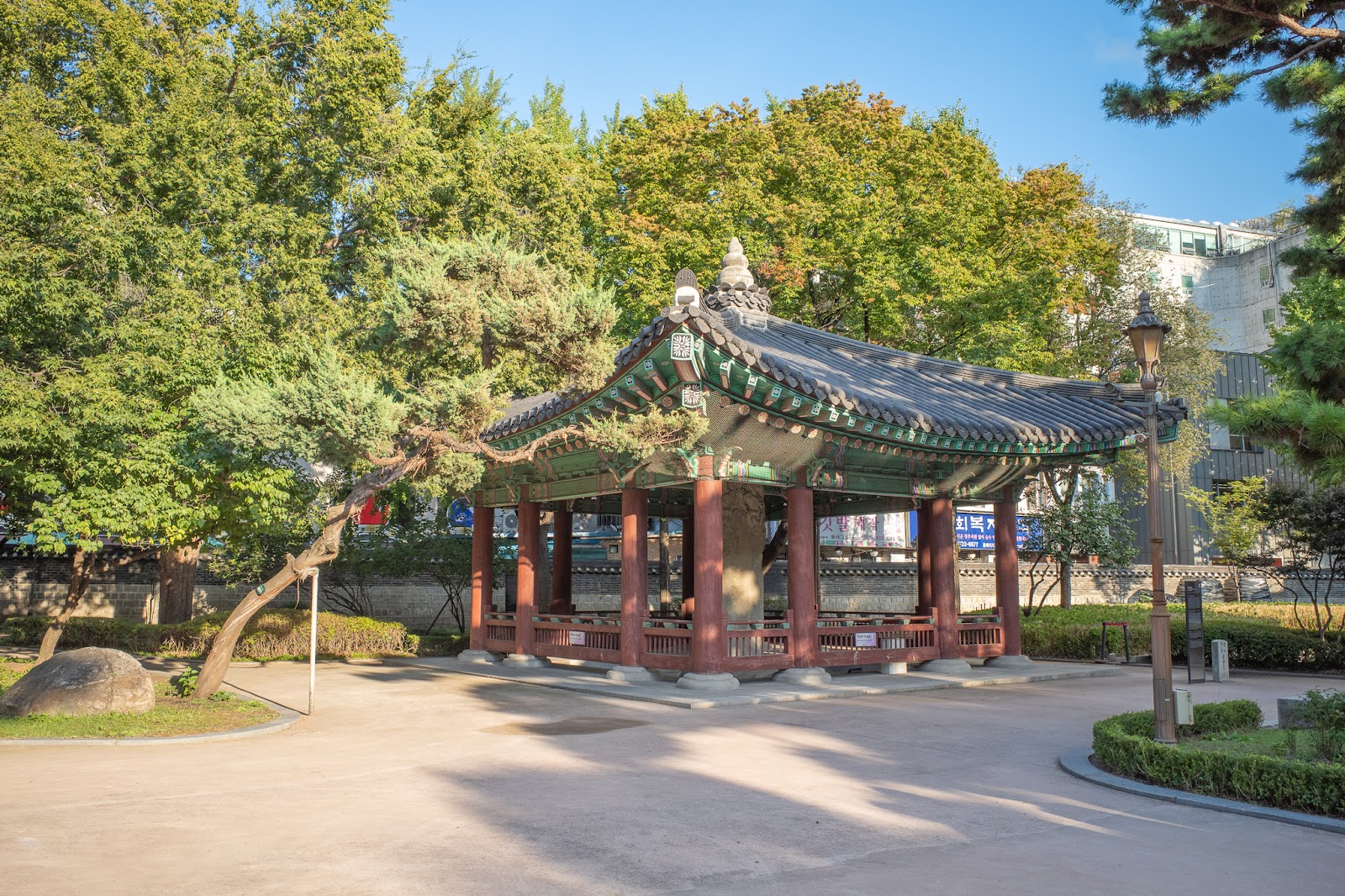
Tapgol Park (Source: Google Maps)
Tapgol Park, also known as Pagoda Park, is a historic site that played a significant role in Korea's struggle for independence during the March 1st Movement in 1919. The park features the Wongaksa Pagoda, a seven-story stone structure built in the 15th century, which is a designated national treasure. The pagoda stands as a symbol of Korea's rich cultural heritage and resilience. The park serves as a peaceful oasis in the heart of the city, with beautiful landscaping and walking paths that invite visitors to reflect on its historical significance. Tapgol Park is not only a place for relaxation but also a site of remembrance, where the spirit of independence and cultural pride is honored. It hosts various cultural events and gatherings, making it a focal point for community activities.
Cheonggyecheon Stream
Stroll along the Cheonggyecheon Stream, an urban renewal project that transformed a neglected waterway into a picturesque haven in the heart of the city.

Cheonggyecheon Stream (Source: Google Maps)
Cheonggyecheon Stream is an urban renewal project that transformed a neglected waterway into a picturesque haven in the heart of Seoul. Spanning approximately 11 kilometers, the stream flows through the city, providing a serene escape from the urban hustle and bustle. The project, completed in 2005, restored the stream's natural ecosystem and created beautiful walking paths, bridges, and green spaces along its banks. Cheonggyecheon is not only a popular spot for leisurely strolls but also hosts various cultural events and festivals throughout the year. The stream is adorned with art installations and historical markers, providing visitors with insights into Seoul's history and culture. This successful revitalization project highlights the city's commitment to sustainability and urban renewal, making it a must-visit landmark.
Deoksugung Palace
Visit Deoksugung Palace, known for its unique blend of Western and traditional Korean architecture, set amidst a tranquil garden.
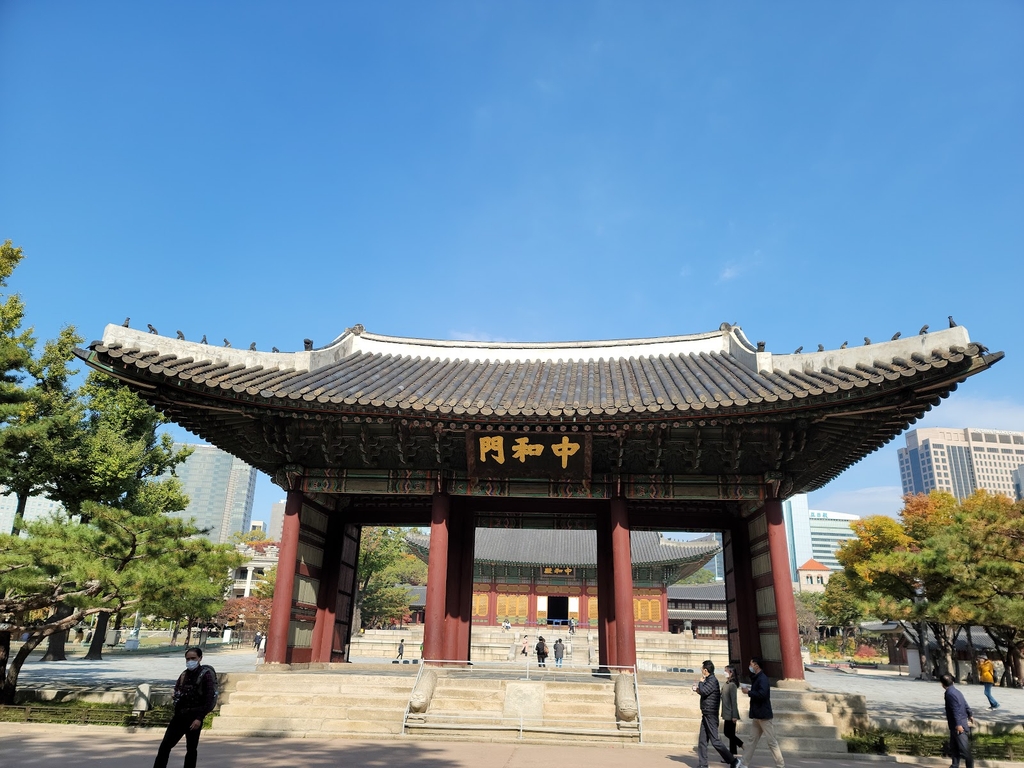
Deoksugung Palace (Source: Google Maps)
Deoksugung Palace is notable for its unique blend of Western and traditional Korean architectural styles, showcasing the evolution of Korean palatial design. Originally built in the 15th century, it served as a royal residence and later became the seat of the government during the Korean Empire. The palace grounds feature beautiful gardens and ponds, providing a tranquil setting for visitors. One of the highlights of Deoksugung is the changing of the guard ceremony, which takes place at the main gate and offers a glimpse into Korea's ceremonial traditions. The palace is also home to the National Museum of Modern and Contemporary Art, further enriching its cultural significance. Deoksugung Palace stands as a testament to Korea's historical journey, reflecting the influences of both Eastern and Western cultures.
Seoul City Hall Plaza (Seoul Plaza)
Conclude your tour at Seoul Plaza, a vibrant public space in front of City Hall that hosts various cultural events and is a great place to relax and reflect on your journey.
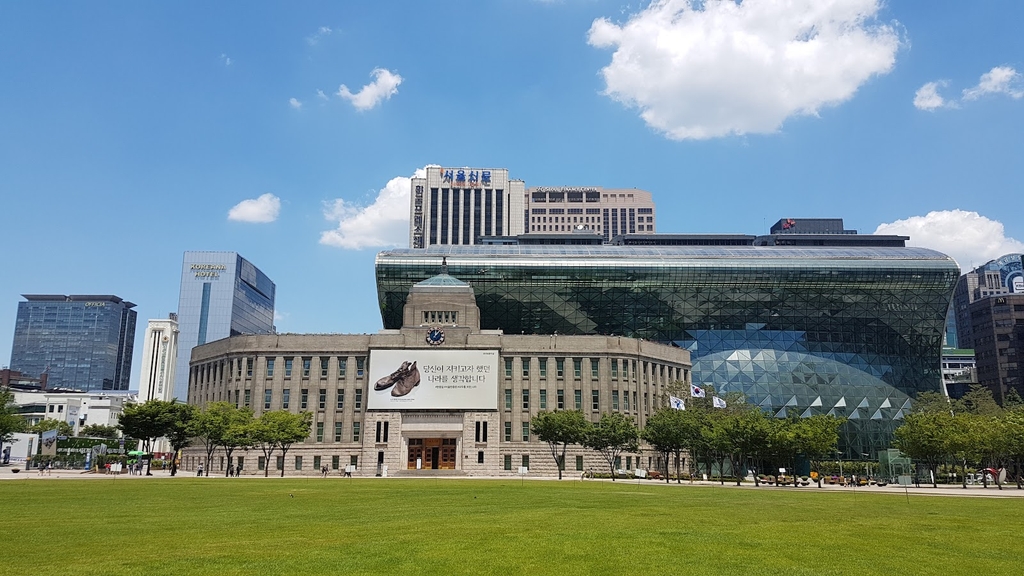
Seoul City Hall Plaza (Seoul Plaza) (Source: Google Maps)
Seoul Plaza, located in front of the iconic Seoul City Hall, is a vibrant public space that serves as a focal point for cultural events and gatherings. The plaza features beautiful landscaping, fountains, and open spaces, making it an ideal spot for relaxation and reflection. It is a popular venue for various activities, including concerts, festivals, and art exhibitions, attracting both locals and tourists. The plaza is also home to the Seoul Metropolitan Library, which provides access to a wealth of information and resources. Its central location makes it a hub of activity, where visitors can engage with the city's dynamic culture. Seoul Plaza embodies the spirit of modern Seoul, blending historical significance with contemporary urban life.

Your travels, your rules.
Create your own Free Walking Tours.
Set your preferences, distances and anything you want to do or see.
Completely free, no payment required.